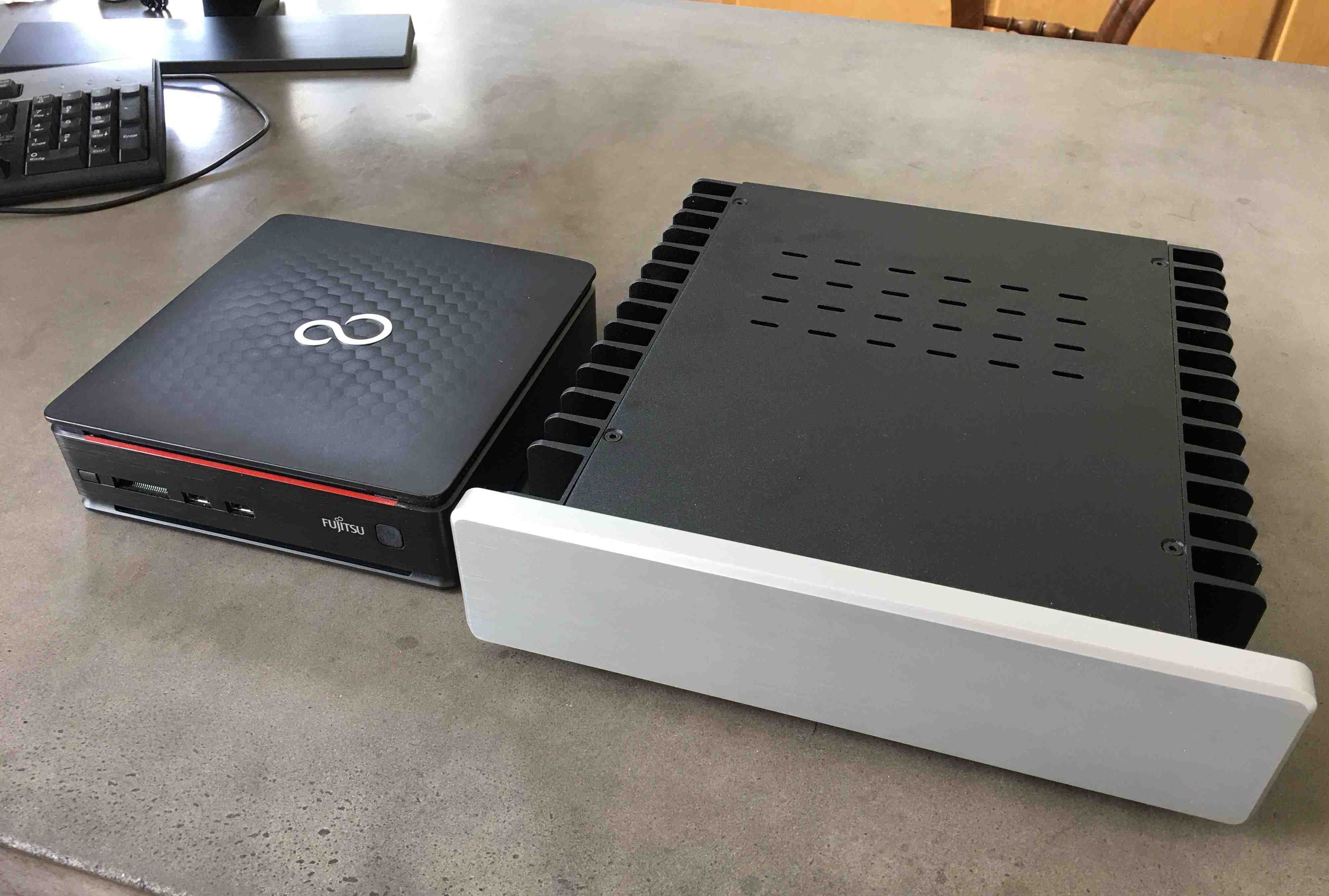
Bits are Bits ?
Recently I was testing several solutions to reproduce audio files, based on personal computers. Just to see if bits are bits. I had been using JPLay for years (with mixed results in terms of stability or compatibility). Therefore, I continued, upgrading to JPLay Femto on a dual PC setup (simple and cheap Fujitsu i5 units). The other contender, after many test sessions at a friends place, is Euphony Stylus. That one ruled the hill after many previous tests, beating diverse Mac and Windows PCs running iTunes, Foobar2k, AudirvanaPlus etc. I built an exact copy of that i5 based Audio-PC, using a fanless case and power supply, with large external linear powersupply and pre-regulator.
That unit without external power supply (easily 3 times the size of the PCs) and one of the Fujitsu’s :
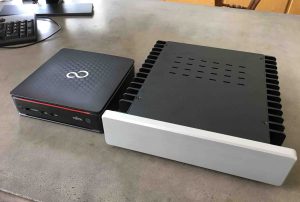
audio PCs
If you want to see results about that comparison and measurements that indicate why – skip this blog.
It is about adventures using cheap PC soundcards with REW (Room EQ Wizard, a free audio test software).
And it is definitely no state-of-the-art test: I have experience with acoustical measurements only.
The idea to take measurements arose after hearing how much more authoritative and well-defined the low frequencies sound using the dual-PC Femto setup. So much about the subjective result. I was suspicious that they had built-in some low frequency augmentation that could be measured …
I generated test-signals with REW, at minus 10 dBFS, 44k / 16 bit : 6, 11, 22, 32, 42, 1120, 11220, 19999 Hz single tones. 22+122 Hz dual tone. 19k+20kHz (CCIF) dual tone. 250+8k Hz (DIN) dual tone. 60+7k Hz (SMPTE) dual tone. pink periodic noise. 16/48 and 24bit/48kHz 9-frequency golden ratio multi tone signal generated using Liberty Praxis ; „no signal“ for noise floor test.
Played by two different music pc setups:
(1) Dual PC JPlay Femto on two Fujitsu i5 PCs, Win 10 Home
(2) “Audiophile PC” based on i5, with linear PS, Euphony Stylus
PC USB out -> JLSounds USB / SPDIF interface with LPS -> SPDIF Out -> DAC or Juli@ SPDIF in
DACs (Digital to Analog Converters):
(1) Listening : modified Lampizator (my reference DAC was not at hand).
(2) Measurement : DH Labs Geek Pulse + linear powersupply , -6dB Out
Analog signal measurement:
Behringer UMC 202 HD using Asio driver with REW, analog input 1 adjusted to receive -9.7 dB FS at the ADC (this seemed to minimize the Behringer units own distortion). i7 test PC with REW under Win7.
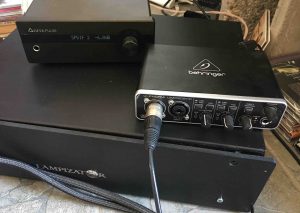
Audio Signal Converters
Test frequencies above 1 kHz were sampled with 88.2 kHz and analyzed with 65.536 samples window length, 32 averages.
Below 1 kHz, sampling with 44.1 kHz, averaging 131.072 sample FFTs.
Digital signal measurement:
SPDIF input of internal ESI Juli@ soundcard on test PC, using REW at 44.1k / 131072 Samples FFT, 32 averages.
The idea was to measure the amplitude of the test signals from 6 Hz upwards and see if the low frequencies were enhanced.
Short result: NOTHING. They are all equally loud with both PC sources.
Since I had those wav test files generated, I thought why not have a look at the distortion? And took the test PC with the cheap Behringer interface to try. The result again: nothing. Tiny differences in harmonic distortion distribution (sometimes more 2nd order HD here or more third order there) will most likely be due to strange idling tones. These very high idling tones sit at different frequencies at the different PC setups. You can see 16 kHz line in the no-signal plot played by Stylus:
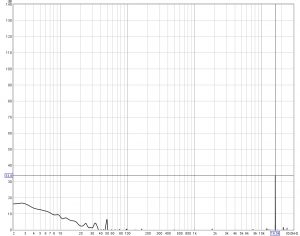
no signal stylus
Femto produces a similar plot (or, most probably, the PCs) at slightly higher frequency, with lower amplitude.
The difference may cause different interference with harmonic distortion of the test tones.
Two examples of the 6 Hz signal, first from Femto:
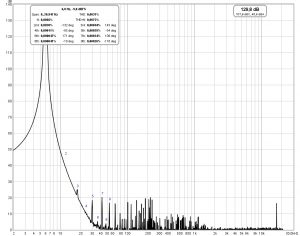
6 Hz Femto
and now Stylus:
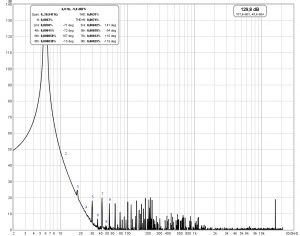
6 Hz stylus
Nevertheless, the resolution achieved with this simple and cheap test equipment is nice to watch. Look how the signal-noise ratio of the Light Harmonic DAC / Behringer ADC reproduced signal improves going from 16 bit / 44.1 kHz to 24 bit / 176 kHz resolution (Femto only, Stylus didn’t work):
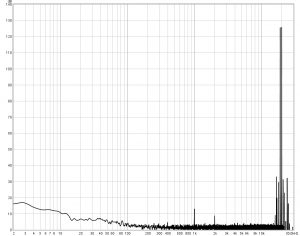
44/16 19+20kHz Femto
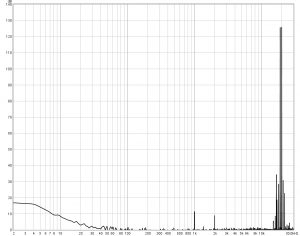
176/24 19+20 kHz Femto
Finally, I tried to look at the digital output of the JLSounds USB – SPDIF converter itself.
Connecting that signal directly to the SPDIF input of the ESI July@ within the test PC. Again, REW easily recognized the signal (Asio drivers work flawless).
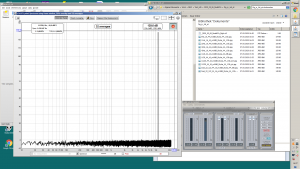
Screenshot_REW_Juli_Panel
And again: NO difference between JPLay Femto PCs and the audiophile PC using Euphony Stylus. Ok, I do not know how to measure jitter, and maybe that would be the key. Nevertheless, it was fun to try, and informative to see what happens making mistakes. Just look what happens if I use the internal July@ clock to interpret incoming SPDIF data instead of the SPDIF embedded data rate. We could call this a really bad case of jitter 😉
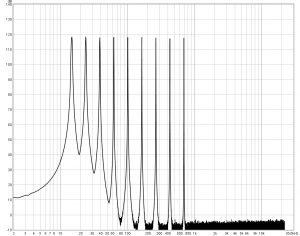
9-frequencies 48/16 at 48k intern
And now using 44.1 kHz … which of course shifts the frequencies, but still a stable reception of data:
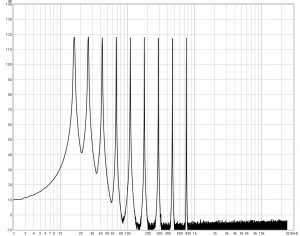
9-frequencies 48/16 at 44k intern
Finally, correctly synced to incoming data stream:
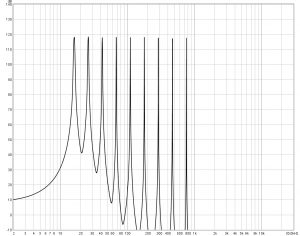
9-frequencies 48/16 at 48k extern stylus
And with Femto:
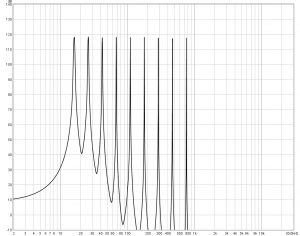
9-frequencies 48/16 at 48k extern femto
Bottom line: using REW is fun. Listening to both computer audio PC systems is fun!
Final remark: I intend to add a short FFT intro next time, for those interested.